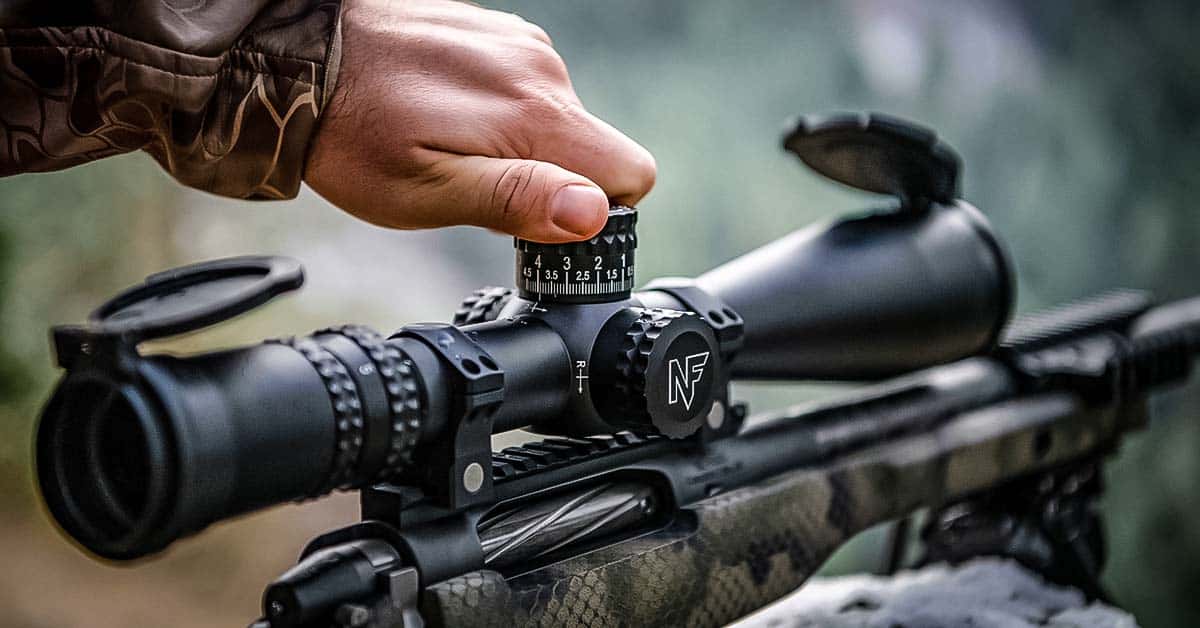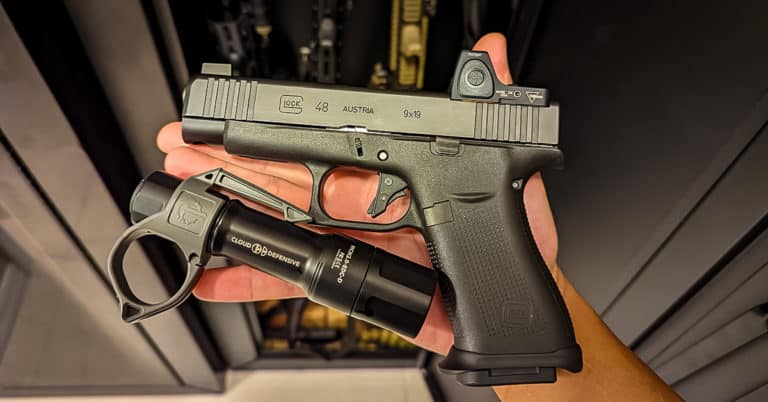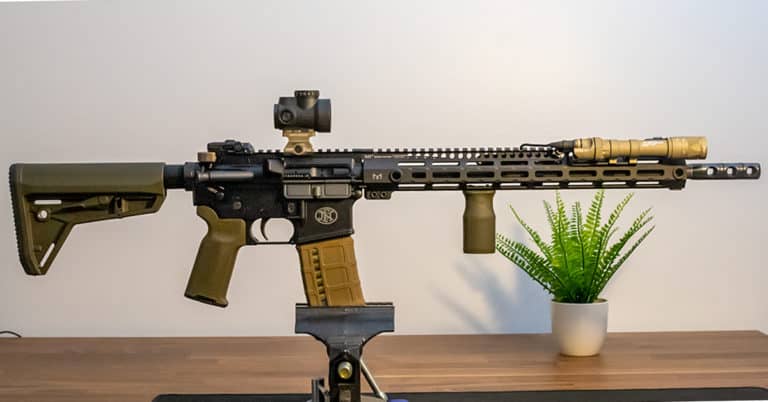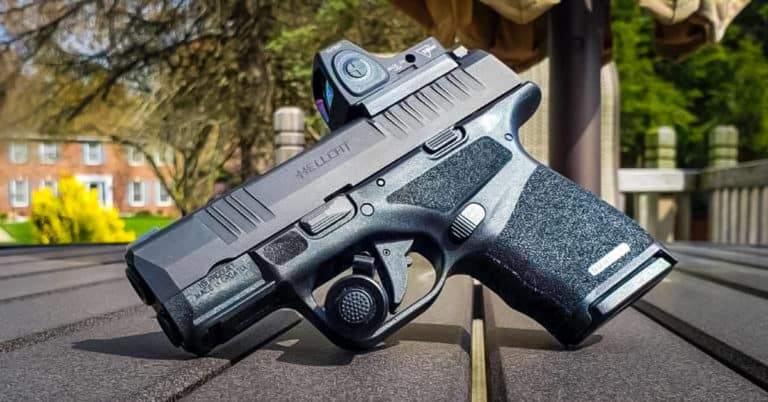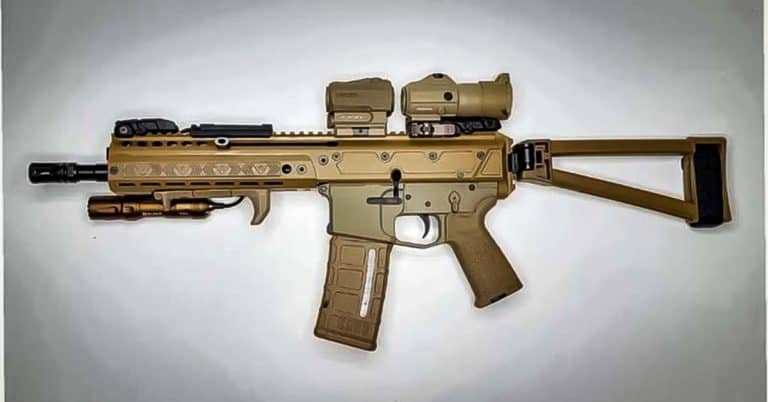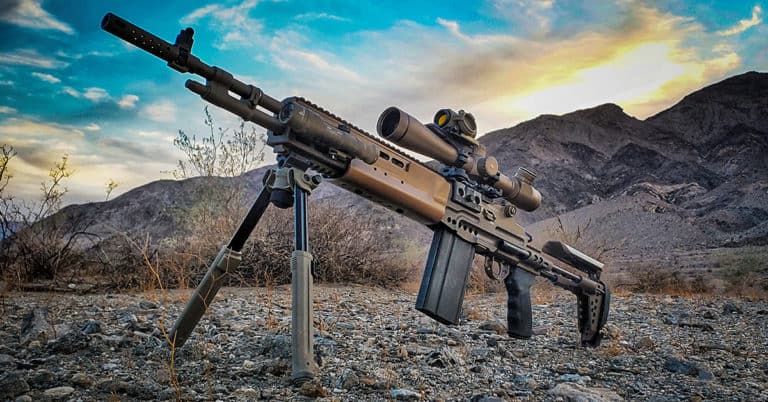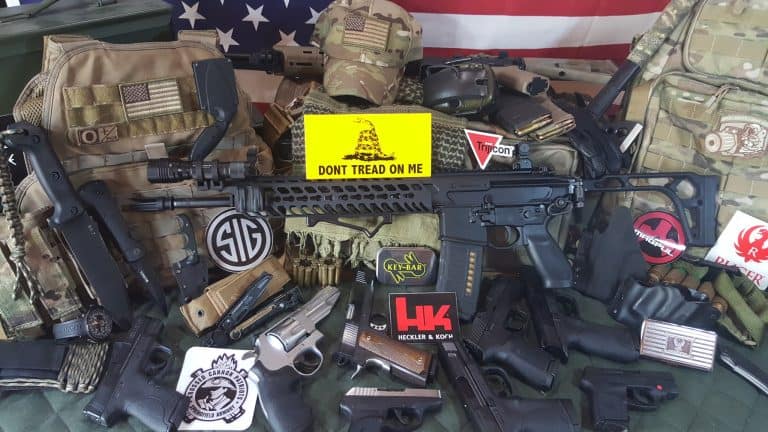How To Adjust A Riflescope (Complete Guide)
If you’re new to using a scope, you must familiarize yourself with how to adjust a riflescope properly.
The good news is that making adjustments to your scope doesn’t have to be a complicated process.
The adjustments for most scopes, whether modern holographic sights, red dot sights, or thermal or night vision scopes, are generally the same.
This article will explain how to adjust a riflescope and everything you need to know about scopes.
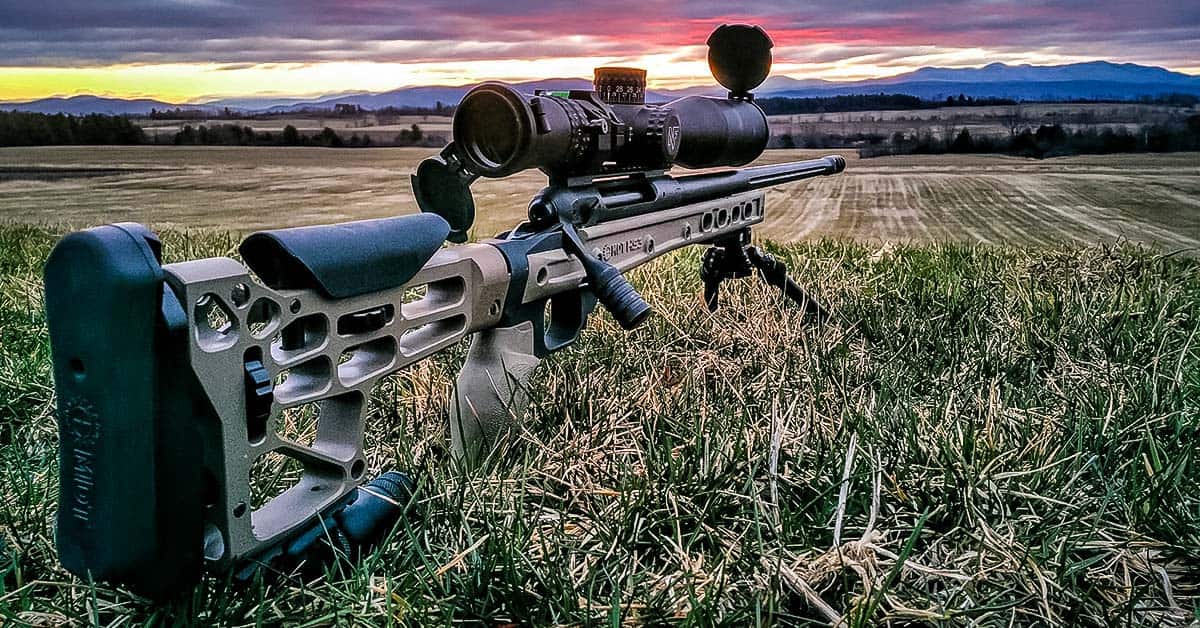
Mounting A Scope
When it comes to mounting your rifle scope, there are five key factors to consider:
- Height
- Position (front to back)
- Scope Level
- Eye box
- Eye relief
To get the perfect mount for your rifle, it’s essential to pay attention to all of these areas.
Some shooters might prefer to have a gunsmith mount their scope for them, but if you want to do it yourself, don’t worry!
As long as you follow this guide carefully, you’ll be able to mount your rifle scope like a pro.
Mounting a rifle scope can seem complex, but understanding a few key concepts can make the process much easier.
Eye Box
The eye box is the area around the eyepiece where your eye can be positioned and still see a clear image through the scope.
A larger eye box is more forgiving, making it easier to acquire your target quickly.
For example, I’ve been out hunting with friends in the past, and they’ve had difficulty acquiring their target quickly because their eye box was too small.
But with a larger eye box, they could acquire their target much more quickly and easily.
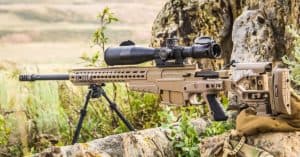
Eye Relief
Eye relief refers to the distance between the eyepiece and your eye.
More extended eye relief allows for more comfortable use of the scope, especially when firing from a prone position or using a heavier caliber rifle.
Scope Leveling
Leveling the scope is important, as an unleveled scope can result in inaccurate shots.
To level the scope, you’ll need to use a leveling tool, such as a bubble level, to ensure that the crosshairs are perfectly parallel to the rifle’s bore.
This can be tricky to do on your own, so having a friend assist you might be helpful. Also, using a rifle vice can be a lifesaver.
Getting the crosshairs parallel with the bore and shots will be much more accurate.
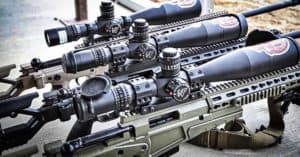
Focus
This is the process of adjusting the eyepiece’s focus to your eyesight. This ensures that the reticle is sharp and easy to see when looking through the scope.
To make this adjustment, rotate the eyepiece while looking through the scope.
Once your scope is mounted properly, your ready to go to the range and zero it.
How To Adjust A Scope (Zeroing)
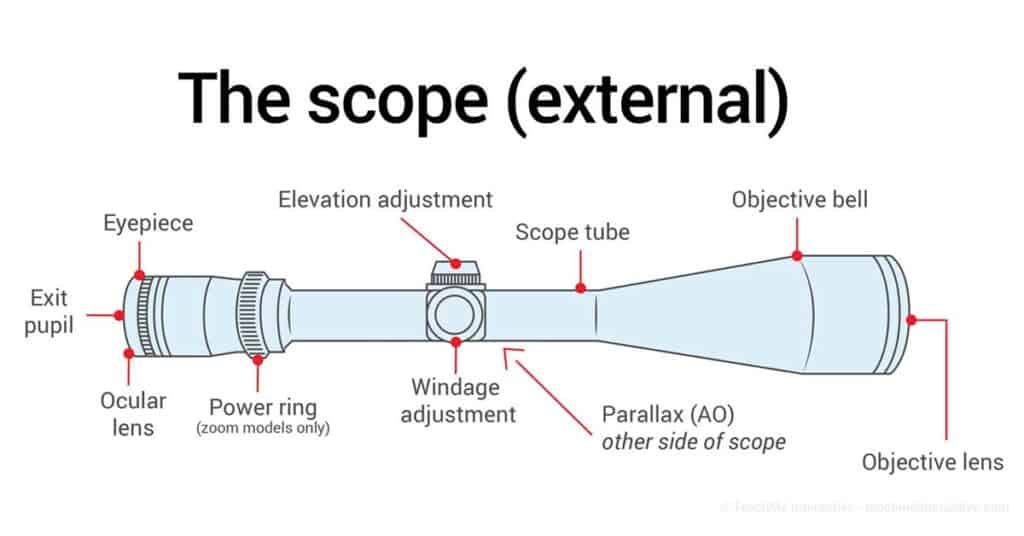
Adjusting a rifle scope is a crucial step in ensuring accurate shooting. For the scope to be effective, it needs to be correctly adjusted to match the shooter’s individual needs and the specific conditions of the shooting situation.
Quick Overview
Here’s a quick rundown on how to adjust a rifle scope:
- Start by identifying the adjustment knobs on the scope. These are typically located on the top and side of the scope and are used to make windage and elevation adjustments, respectively.
- Next, place the rifle on a steady surface, such as a shooting bench or a bipod. This will help to eliminate any movement of the rifle while making adjustments.
- Look through the scope and adjust the windage knob (located on the top of the scope) so that the crosshairs are centered on the target.
- Now, adjust the elevation knob (located on the side of the scope) so that the crosshairs are also centered on the target.
- Once you’ve made the adjustments, take a few shots at the target to check for accuracy. Repeat the adjustment process as needed until the bullet hits the center of the target.
- It’s always good to check your zero every time you shoot your rifle, since environmental conditions and temperature can change, which can cause zeroing to change too.
It’s important to note that adjusting a rifle scope can be a bit tricky and may take some practice.
Depending on your scope type, it may have different adjustment systems, so consult the user manual that came with your scope if you need additional guidance or help.
How To Adjust A Rifle Scope
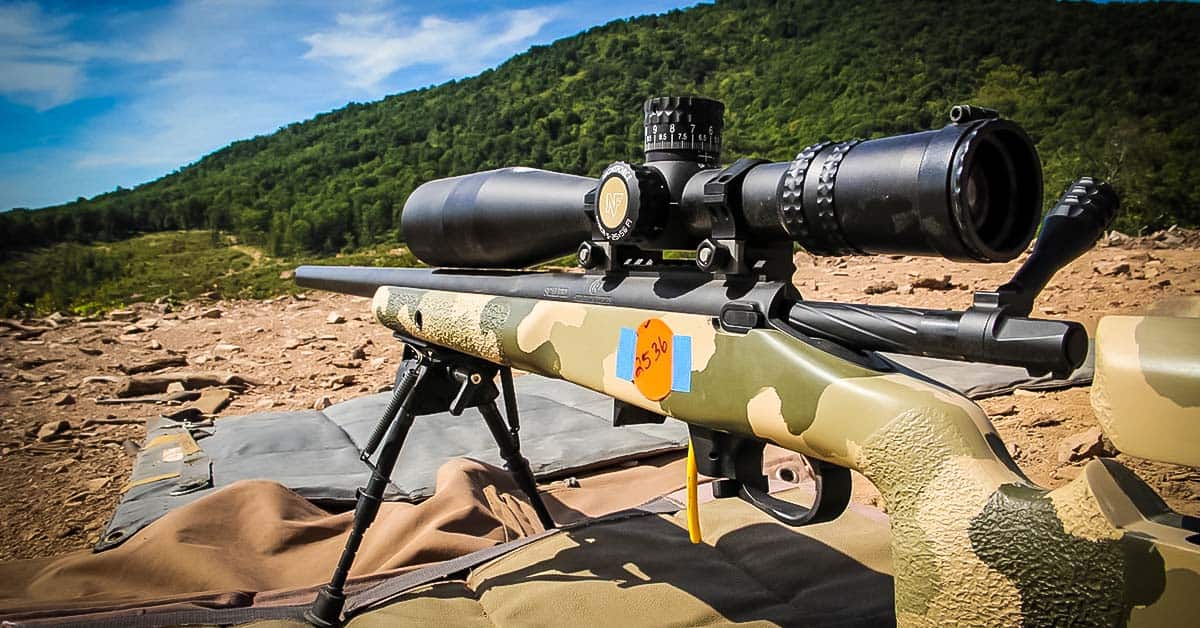
When you hear people say zero your scope, this means sighting it in so that the point of aim is the same as the point of impact.
This is what you should do first after mounting your scope.
You can help make this process quicker by using a laser bore sight. This will get you close to zero and on paper when you go to the range, but you will still have to make adjustments by actually shooting.
So don’t think a laser bore sight will be all you need to zero a scope.
You want the bullets to hit precisely in the center of the crosshairs on your reticle. It would help if you also determined which distance you want to zero your scope at.
This will be different for everyone. Caliber and barrel length will make you want to choose a different distance to zero. Also, zero distance will change if it is a close-range self-defense weapon compared to a long-range precision rifle.
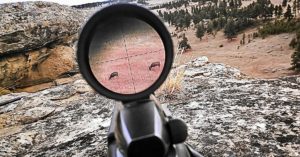
The two main adjustments to zero will be:
- Windage
- Elevation
These adjustments are usually in MOA or MRAD. If you want to learn the difference between MOA vs. MRAD, I have a post explaining them in great detail.
Adjusting Elevation
The elevation turret controls the vertical alignment of the bullet, up and down. The top turret will turn clockwise or counterclockwise for your up-and-down adjustments.
I recommend shooting a three to five-shot grouping before making any adjustments.
Every time the turret “clicks,” it adjusts one increment. These increments depend on which scope you have but are usually 1/4 MOA adjustments, translating to moving the bullet impact point 1/4 an inch at 100 yards.
Following your shots is an excellent way to remember how to adjust your reticle. So if you are shooting too high, bring the reticle up to match the point of impact.
Adjusting Windage
Adjusting your windage is the next step after dialing in your elevation.
The windage adjustments work just like the elevation adjustments, but these are on the horizontal plane of the reticle, left and right.
The side turret will control these adjustments, and you will use the same process as before.
Shoot a three to five-shot group before making any adjustments.
One key thing to consider is to use your scopes specific reticle if it has bullet drop compensation or hold-over points to compensate for wind or a moving target.
This is easier than making adjustments after you zero your scope.
Related Articles
Other Scope Adjustments
Parallax
If the reticle changes position on the target when you move your head or shift your gaze, your parallax is not properly compensated for at that range.
Scopes that don’t come with parallax adjustment features are going to be factory-set to be parallax free at a specific distance. Within that distance, you won’t have issues.
In other models, parallax adjustment can be found on the left side by the elevation and windage turrets or via an adjustable objective.
It’ll take a little bit of playing around. When the image is crisp and sharp without any crosshair travel, you’ll know you’re parallax free.
Magnification
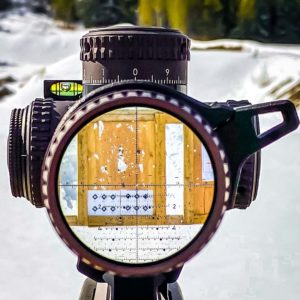
Scope magnification is a multiplication measurement in contrast to the average naked eye.
Most tube scopes also come with a zoom ring to adjust magnification.
You can adjust the magnification by turning the dial to your desired magnification.
Illuminated Reticle
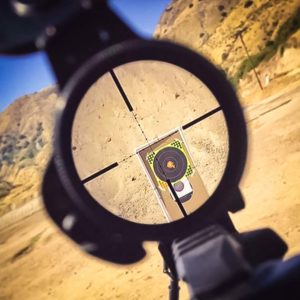
If you have a fancy scope with an illuminated reticle, you will be about to adjust the brightness and also turn this feature on or off.
The placement of this turret depends on which brand scope you have. They are usually located between the magnification ring and the scope’s eyepiece.
They are also usually offset to 45 degrees.
You can quickly turn this feature on or off by turning this dial.
Final Considerations
When adjusting a rifle scope, there are a few final considerations that people often forget:
- Rechecking zero: after making any adjustment to the scope, it’s essential to recheck your zero. This can be done by firing a few test shots at a target and adjusting the scope as necessary to align the point of impact with the point of aim.
- Using the right tools: Some scopes require specific tools to make adjustments, like a torque driver or Allen wrenches, it is essential to have the right tool for the scope to avoid damaging it or even being unable to make the adjustments
- Using a proper shooting position: The scope adjustments are made to have the correct alignment when shooting in a specific position. Ensure that you are in the position you will be shooting from when making adjustments
- Consistency in your ammunition: Different types of ammunition can have different velocities, affecting your point of impact and zero. Try to be consistent with the ammunition type you will be using when making adjustments
- Checking your scope mounting: A loose scope mount can be the source of many accuracy issues. Before making any adjustments, check that your scope is properly mounted and tightened to the rifle.
How To Adjust A Rifle Scope FAQ
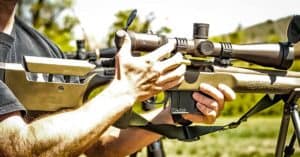
How do I adjust the windage on a rifle scope?
To adjust a rifle scope’s windage or horizontal alignment, locate the windage adjustment knob or turret on the right side of the scope. Turn the knob or turret to the right to move the point of impact to the right and to the left to move it to the left.
How do I adjust the elevation on a rifle scope?
To adjust the elevation, or vertical alignment, of a rifle scope, locate the elevation adjustment knob or turret on the top of the scope. Turn the knob or turret up to raise the point of impact and down to lower it.
What is the purpose of the parallax adjustment on a rifle scope?
The parallax adjustment on a rifle scope minimizes the visual distortion that can occur when the reticle is not in the same plane as the target. This adjustment is typically located on the side or top of the scope and can be adjusted to match the target’s distance.
How can I adjust my rifle scope to account for bullet drop?
To adjust for bullet drop, use the elevation adjustment knob or turret to change the point of impact to align with the point of aim at the desired distance. Many scopes also come with bullet drop compensating reticles which can aid in adjusting for bullet drop.
How do I know if my rifle scope is properly zeroed?
Your rifle scope is properly zeroed when the point of impact and the point of aim is the same at a given distance. This can be verified by firing a few test shots at a target, adjusting the scope as necessary, and then firing additional shots to confirm that the point of impact and point of aim is the same.
Further reading on Firstworldcrusader.com: Are you interested in learning more about guns and gear?
This list of the Best Red Dot Sights can help you choose the best optic for your rifle.
In addition, here are the Best AR-15 Upgrades & Accessories that can help you get more out of your primary battle rifle.

